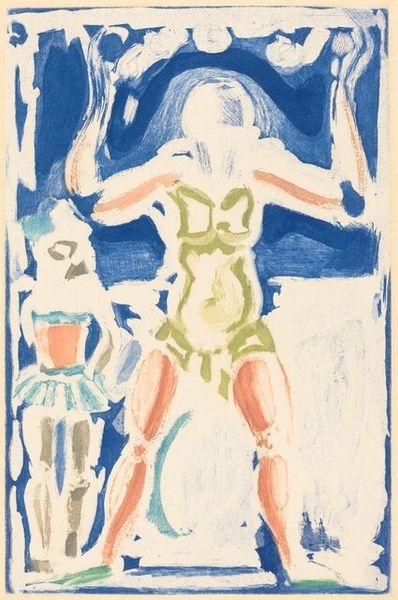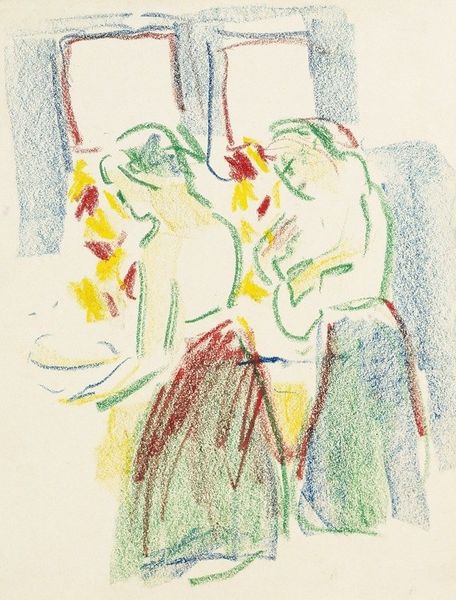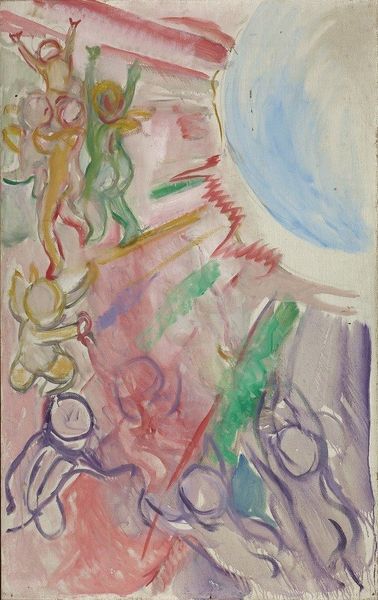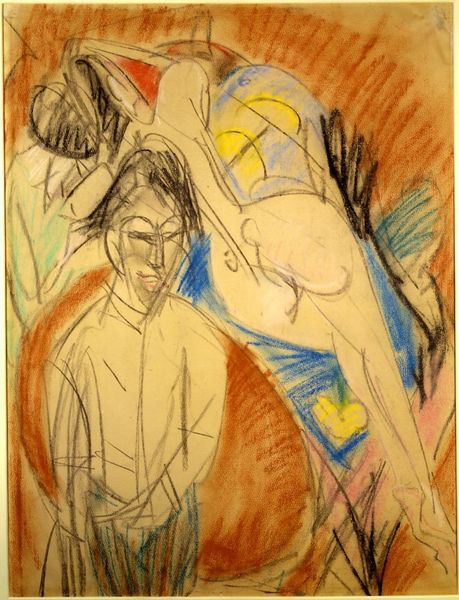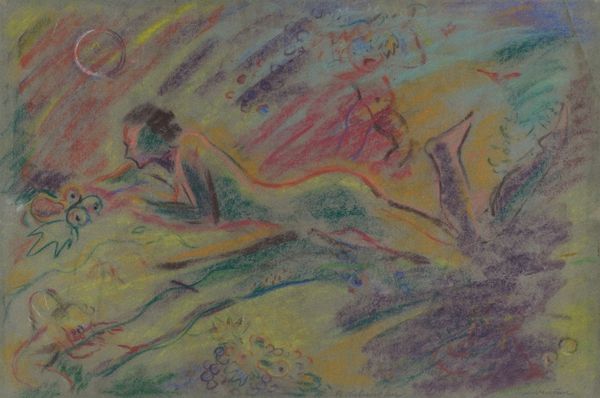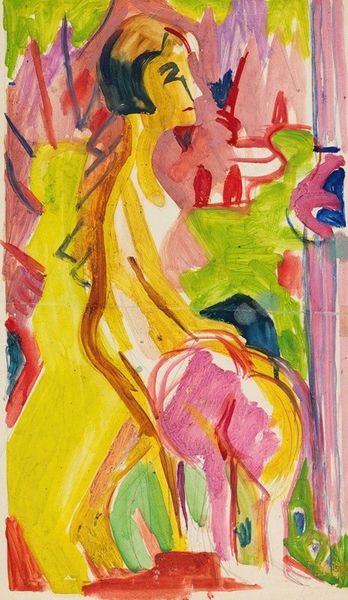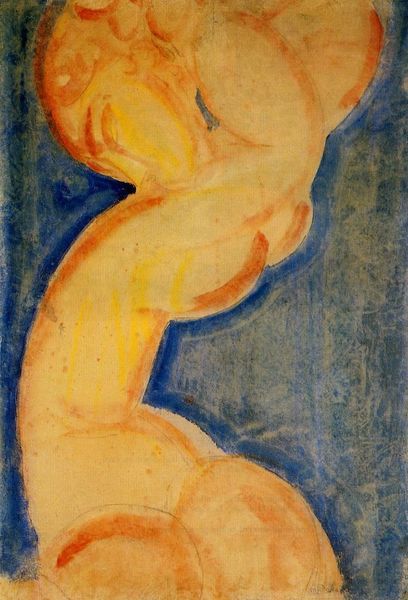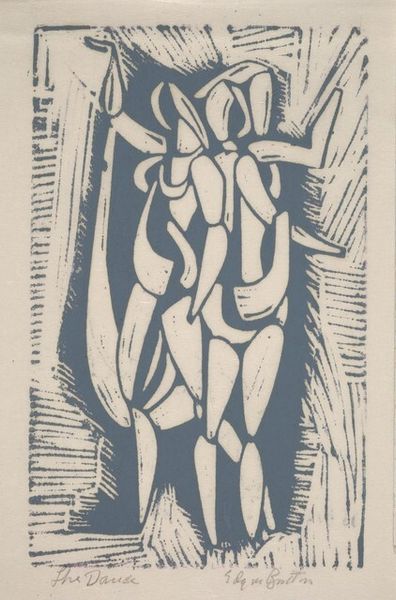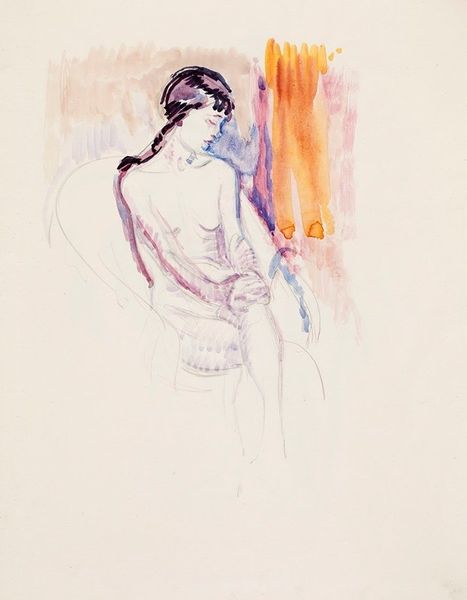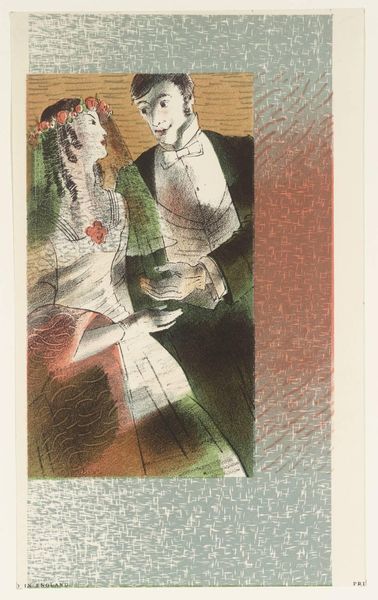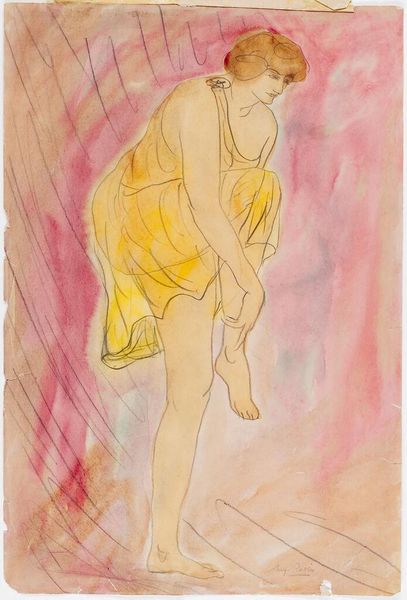
drawing, coloured-pencil
#
portrait
#
drawing
#
coloured-pencil
#
figuration
#
abstract
#
coloured pencil
#
expressionism
#
portrait drawing
Copyright: Public Domain: Artvee
Editor: This is “Playing the Mandolin,” created around 1927-1928 by Mikuláš Galanda, made with coloured pencils. I’m struck by its gentle, almost dreamlike quality. What stands out to you when you look at this piece? Curator: Immediately, I’m drawn to consider the cultural milieu from which Galanda emerged. During this interwar period, there was a conscious effort, especially in Central and Eastern Europe, to forge a new artistic identity. Do you see how the folk elements, especially in the costuming and the choice of a mandolin, are filtered through an almost modernist lens? Editor: Yes, now that you mention it, the clothing details seem very deliberate, not entirely traditional, but definitely evocative. And the way the figures are rendered is very stylized, almost abstracted. Curator: Precisely. Galanda, like many artists of his time, was attempting to negotiate the push and pull between international art movements and a desire to represent something distinctly local. What do you think this performance represents in that context? Editor: Maybe it’s about finding harmony between those influences, creating something new from both tradition and modernity? Curator: An astute observation! The “playing” itself could be a metaphor for this creative negotiation, a way of harmonizing identity and artistic expression. The choice to render it in coloured pencil rather than oil may signal the intimacy and directness of folk art forms. Editor: It’s interesting to consider the materials in relation to the message. I didn’t consider that before. Curator: It all plays a part. Reflecting on this piece, I realize that to truly engage with an artwork, we need to unpack not only the image itself, but also the broader historical and cultural forces that shaped its creation. Editor: Absolutely. This discussion has definitely deepened my understanding of the context and meaning behind this piece. Thanks!
Comments
No comments
Be the first to comment and join the conversation on the ultimate creative platform.
